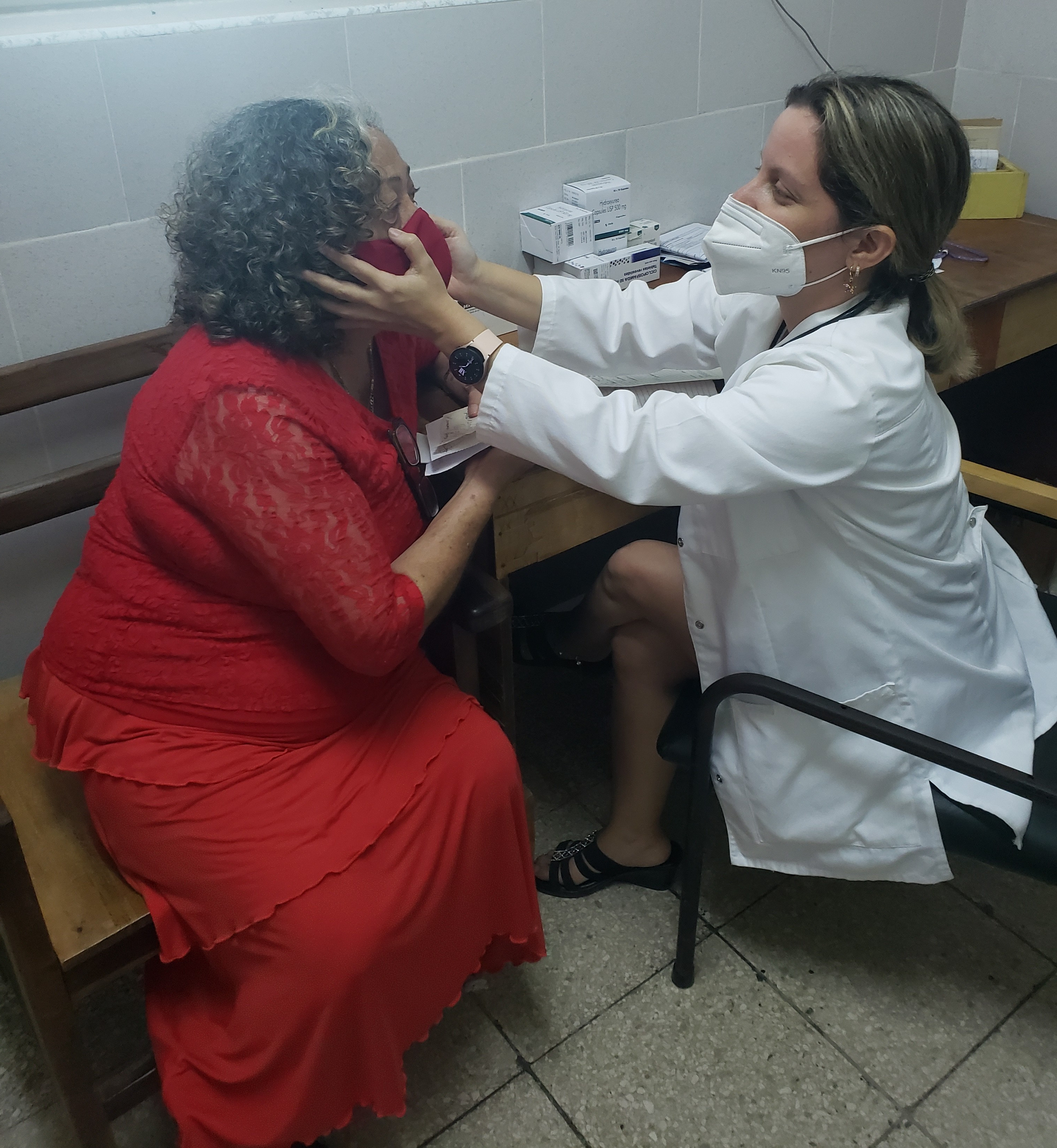CAMAGÜEY.- The Immunological Thrombocytopenic Purpura disease is so named because it can produce purple patches or spots on the skin, Thrombocytopenic because platelets drop to less than 100,000 cubic millimeters (mm3) and Immunological due to the presence of antibody against the platelets. Currently called Primary Immune Thrombocytopenia, to define the absence of an underlying cause that justifies the decline of platelets and the term purpura is eliminated because the disease does not always produce them.
This is how Dr. Raquel Rodríguez De Nobrega, a specialist in Hematology and Comprehensive General Medicine (MGI), from the Amalia Simoni Clinical Surgical Hospital in this city, described this condition, she elaborated on this disease’s manifestations:
"The most characteristic sign is bleeding on the skin and mucous membranes. On the skin they are called dry purpuras. Among the most frequent we find petechia, which are round red or purple macules, less than four millimeters in diameter, which do not pale at pressure are not raised or itchy and appear more frequently in the lower limbs; ecchymosis, which are superficial bruises that do not spread beyond the skin and as they are removed they change color from purple to brown, yellow and green, the vibes, are linear purpuric lesions a few millimeters in diameter. In the mucous membranes they are the so-called moist purpuras such as nosebleeds, oral mucosa, gums and vaginal.
"These lesions generally appear when platelets drop below 30,000 mm3. There may also be, although less frequent, visceral bleeding such as: digestive, urinary, and in the central nervous system. The patient does not present an enlarged spleen or liver on examination physical.
"Sometimes it is diagnosed by a routine study, such as in the worker's medical check-up or in consultations scheduled by the family’s doctor."
— When should I see a doctor? When is it necessary to see a Hematology specialist? By what routes does the patient reach the hematologist?
— When the patient presents any of the signs mentioned above, they should go to the doctor in their health area who will indicate a complete blood count with differential and platelet count. And if there is thrombocytopenia, that is, low platelets, the patient is referred to the hematologist with the necessary argument.
"If the signs persist despite the fact that the examination is normal, the patient should still be sent to consultation with a specialist to look for another cause of the purpuric lesions and thus corroborate with the hematology laboratory if the patient really does not have low platelets. In any case, he will always be taken care of."
— What are the causes of this condition, if any?
— Yes, there are, and the main one lies in the deregulation of the immune system (the immune system mistakenly attacks platelets), it causes antibodies against its own platelets, that is, autoantibodies, and they are destroyed by the cells of the reticule-endothelial system (functional system of the body that participates mainly in the defense against infections and in the elimination of cellular degradation products). There are also secondary immunologic and non-immunologic thrombocytopenia. Among the former one are, for example, heparin-induced thrombocytopenia, secondary to systemic lupus erythematous, after a blood transfusion, post-transplantation, in neonates, among others. Among the latter one we find disseminated intravascular coagulation (characterized by the formation of abnormal accumulations of thick blood —clots— within the blood vessels), hemolytic uremic syndrome (serious disease, characterized by acute kidney damage, associated with alterations in blood cells), and metastases, to name a few.
— According to the causes, can it be avoided?
- It cannot be helped
— Can it be hereditary?
- It is not hereditary.
— Is it curable?
— In children, between 80 and 90% of cases, the disease is self-limited and disappears in a period of three to six months, while in adults it tends to become chronic. Patients who have low platelets for more than 12 months are called chronic ITPs. The moment in which it is detected has no influence, it cannot be predicted when the patient will present the immunological disorder, so it cannot be avoided, but it has been described that it frequently appears in children during seasonal changes and there are history of a febrile picture (viral) about seven to 21 days before the abrupt onset of the bleeding picture.
— According to your experience, who suffers more from this ailment, male or female?
— In adult women.
"In childhood it is more frequent between two and eight years, in adults it has a bimodal peak, that is, in the group between 18 and 49 years, and after 65 years."
— A general advice for those who suffer from it...
— All patients suffering from this disease are advised to attend scheduled consultations, to avoid accidents such as blows, falls and injuries. Also, try to avoid infections because they can decompensate the disease as such.
Translated by Linet Acuña Quilez



